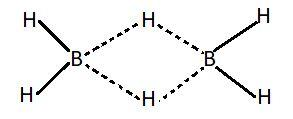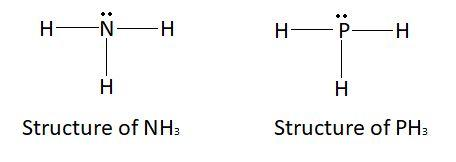
What are electron deficient and electron rich compounds of hydrogen? Give examples.
Answer
501.6k+ views
Hint: In a stable atom there are total eight electrons in the outermost shell of the atom. On the basis of outermost shell electrons it is concluded that if the compound is electron deficient, electron rich or electron precise compound.
Complete step by step answer:
We know that there are a total eight electrons in the outermost shell of an atom and these electrons define whether the compound is electron deficient or electron rich. Electron deficient compounds are those compounds which don't have sufficient number of electrons for the formation of covalent bonds. Covalent bond is the bond in which atoms are joined by the sharing of electrons. This bond is formed when two atoms share their electrons with each other. In such compounds central metal atoms don't have a filled octet. Number of electrons in the outermost shell of such compounds is less than eight. Group

This picture shows the structure of
Electron rich hydrides are those hydrides which have excess electrons. These compounds usually have more electrons than needed for the formation of bonds. These excess electrons are because of the presence of lone pairs on the central atom. Elements of group

This picture shows the structure of
Note: Like electron rich and electron-deficient compounds, there exists electron precise compounds as well. Electron precise compounds are those compounds which have an exact number of electrons that are required for bond formation. Examples of electron precise compounds are
Complete step by step answer:
We know that there are a total eight electrons in the outermost shell of an atom and these electrons define whether the compound is electron deficient or electron rich. Electron deficient compounds are those compounds which don't have sufficient number of electrons for the formation of covalent bonds. Covalent bond is the bond in which atoms are joined by the sharing of electrons. This bond is formed when two atoms share their electrons with each other. In such compounds central metal atoms don't have a filled octet. Number of electrons in the outermost shell of such compounds is less than eight. Group

This picture shows the structure of
Electron rich hydrides are those hydrides which have excess electrons. These compounds usually have more electrons than needed for the formation of bonds. These excess electrons are because of the presence of lone pairs on the central atom. Elements of group

This picture shows the structure of
Note: Like electron rich and electron-deficient compounds, there exists electron precise compounds as well. Electron precise compounds are those compounds which have an exact number of electrons that are required for bond formation. Examples of electron precise compounds are
Latest Vedantu courses for you
Grade 10 | CBSE | SCHOOL | English
Vedantu 10 CBSE Pro Course - (2025-26)
School Full course for CBSE students
₹37,300 per year
Recently Updated Pages
Master Class 11 Business Studies: Engaging Questions & Answers for Success

Master Class 11 Economics: Engaging Questions & Answers for Success

Master Class 11 Accountancy: Engaging Questions & Answers for Success

Master Class 11 Computer Science: Engaging Questions & Answers for Success

Master Class 11 English: Engaging Questions & Answers for Success

Master Class 11 Maths: Engaging Questions & Answers for Success

Trending doubts
Which one is a true fish A Jellyfish B Starfish C Dogfish class 11 biology CBSE

Difference Between Prokaryotic Cells and Eukaryotic Cells

1 ton equals to A 100 kg B 1000 kg C 10 kg D 10000 class 11 physics CBSE

1 Quintal is equal to a 110 kg b 10 kg c 100kg d 1000 class 11 physics CBSE

One Metric ton is equal to kg A 10000 B 1000 C 100 class 11 physics CBSE

How much is 23 kg in pounds class 11 chemistry CBSE




